The AMD Zen and Ryzen 7 Review: A Deep Dive on 1800X, 1700X and 1700
by Ian Cutress on March 2, 2017 9:00 AM ESTBenchmarking Performance: CPU Rendering Tests
Rendering tests are a long-time favorite of reviewers and benchmarkers, as the code used by rendering packages is usually highly optimized to squeeze every little bit of performance out. Sometimes rendering programs end up being heavily memory dependent as well - when you have that many threads flying about with a ton of data, having low latency memory can be key to everything. Here we take a few of the usual rendering packages under Windows 10, as well as a few new interesting benchmarks.
Corona 1.3
Corona is a standalone package designed to assist software like 3ds Max and Maya with photorealism via ray tracing. It's simple - shoot rays, get pixels. OK, it's more complicated than that, but the benchmark renders a fixed scene six times and offers results in terms of time and rays per second. The official benchmark tables list user submitted results in terms of time, however I feel rays per second is a better metric (in general, scores where higher is better seem to be easier to explain anyway). Corona likes to pile on the threads, so the results end up being very staggered based on thread count.
Blender 2.78
For a render that has been around for what seems like ages, Blender is still a highly popular tool. We managed to wrap up a standard workload into the February 5 nightly build of Blender and measure the time it takes to render the first frame of the scene. Being one of the bigger open source tools out there, it means both AMD and Intel work actively to help improve the codebase, for better or for worse on their own/each other's microarchitecture.
LuxMark
As a synthetic, LuxMark might come across as somewhat arbitrary as a renderer, given that it's mainly used to test GPUs, but it does offer both an OpenCL and a standard C++ mode. In this instance, aside from seeing the comparison in each coding mode for cores and IPC, we also get to see the difference in performance moving from a C++ based code-stack to an OpenCL one with a CPU as the main host.
POV-Ray 3.7
Another regular benchmark in most suites, POV-Ray is another ray-tracer but has been around for many years. It just so happens that during the run up to AMD's Ryzen launch, the code base started to get active again with developers making changes to the code and pushing out updates. Our version and benchmarking started just before that was happening, but given time we will see where the POV-Ray code ends up and adjust in due course.
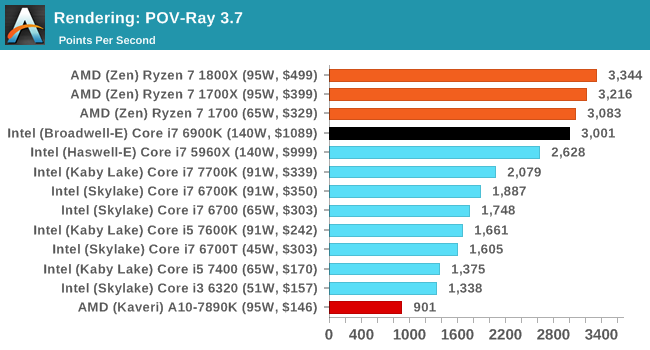
Cinebench R15
The latest version of CineBench has also become one of those 'used everywhere' benchmarks, particularly as an indicator of single thread performance. High IPC and high frequency gives performance in ST, whereas having good scaling and many cores is where the MT test wins out.
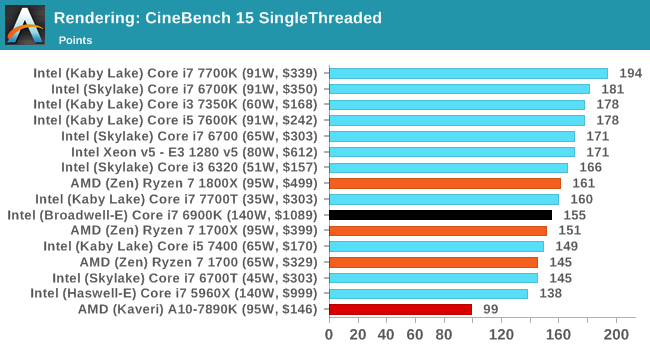
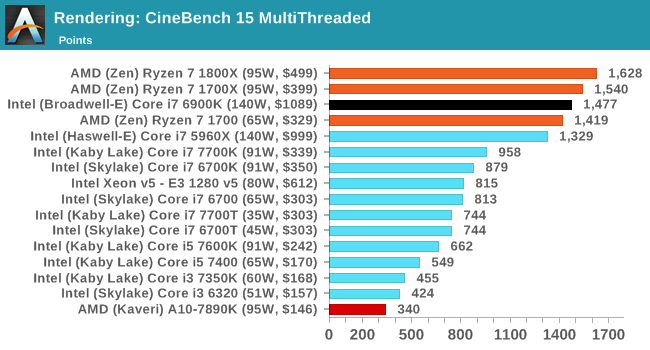


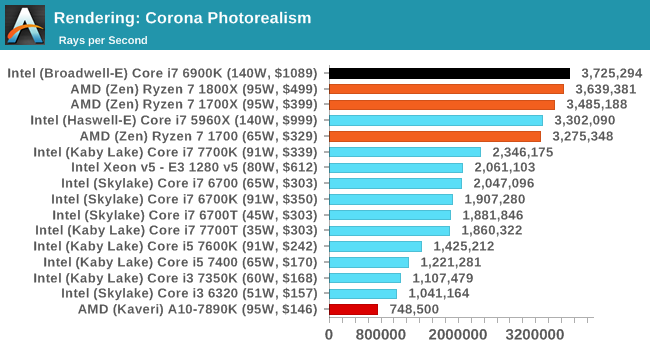
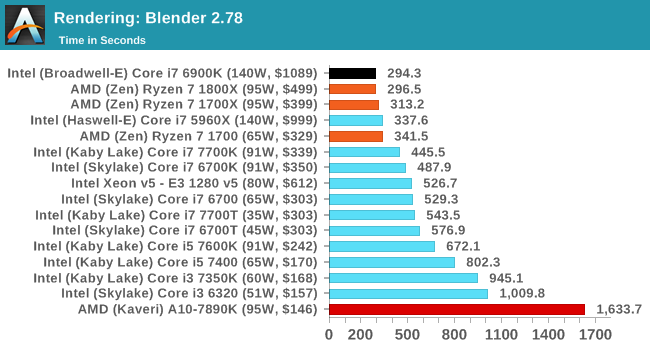

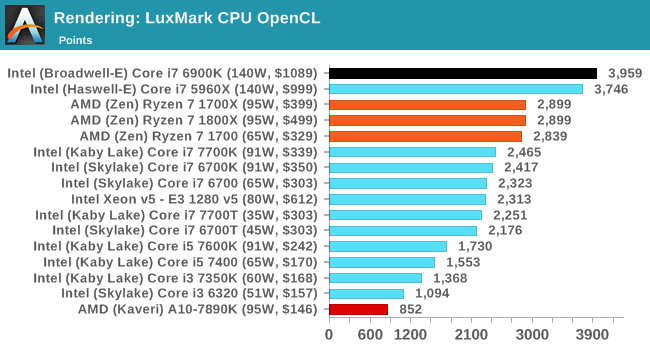








574 Comments
View All Comments
Notmyusualid - Sunday, March 5, 2017 - link
@ prisonerXPossibly, but with dollars in our pockets, that others want. Hence this product release.
prisonerX - Sunday, March 5, 2017 - link
Yes, obviously this product release was just for gamers. Thank you for proving my point.Notmyusualid - Monday, March 6, 2017 - link
You are most welcome!divertedpanda - Saturday, March 4, 2017 - link
I doubt gamers make a majority of the people who can afford $150+ CPUs... Content Creators/Prosumers probably make the bank for these kind of purchases....Notmyusualid - Monday, March 6, 2017 - link
@ Meteor2I do too.
nobodyblog - Friday, March 3, 2017 - link
AMD claimed that Every core is really one core, but now, we know it is at least two cores, because everything is more...It won't be able to be well in different scenarios specially in less threads and even gaming. I doubt their patch works.. It is very bad in IPC, and performance wise it is a garbage in 16 nm...
Thanks!
Thanks!
nobodyblog - Friday, March 3, 2017 - link
I mean 14 nm FinFet..charliebi - Friday, March 3, 2017 - link
want to setup a gaming rig? Buy a 7700K, or better save something and buy a 7500 or 7600 and put the savings on a gtx 1080 ti. That's all gamers need to know.007ELmO - Friday, March 3, 2017 - link
what if I want to build 4 gaming rigs for a LAN? does the 1080ti and AMD chip run under 500W power requirement?Outlander_04 - Saturday, March 4, 2017 - link
Gamers , like everyone else, need to buy using their brains and not prejudices.First up decide if you are going to use a 1080p/ 60 Hz monitor . If you are then you do not need either an i7 7700 or a 1080ti .
If you want that resolution and you have a 144 hz monitor then there is a case for using an intel quad.
If you are gaming at 4K, 1440p or with a high resolution ultra wide then Ryzen will also do the job very well and be a far better encoder. For those users the AMD chip looks to be very very good v
value